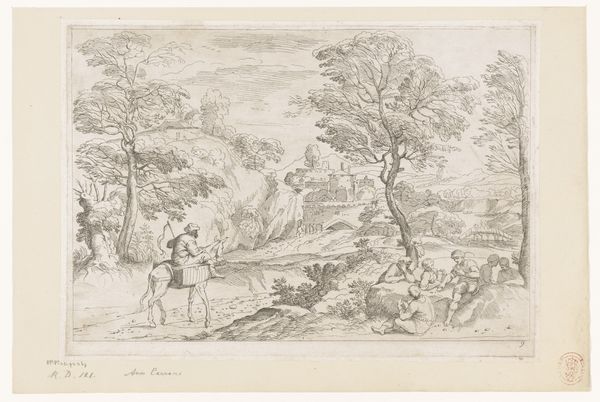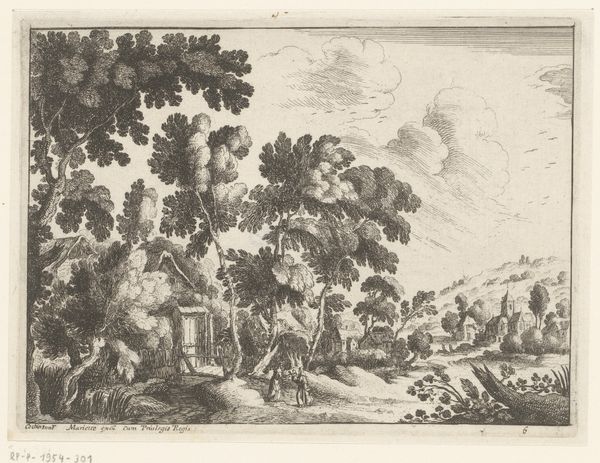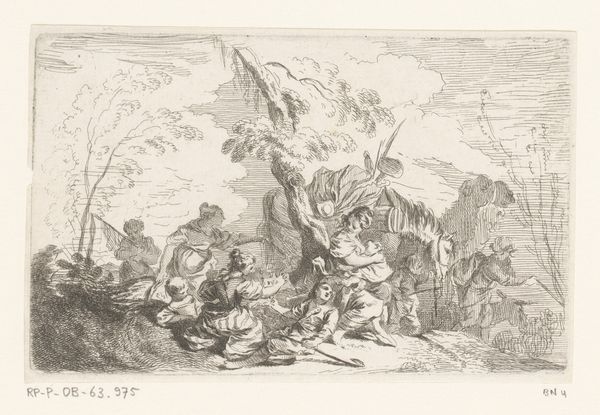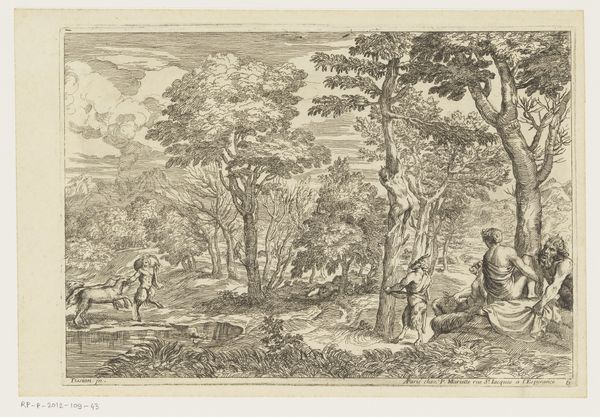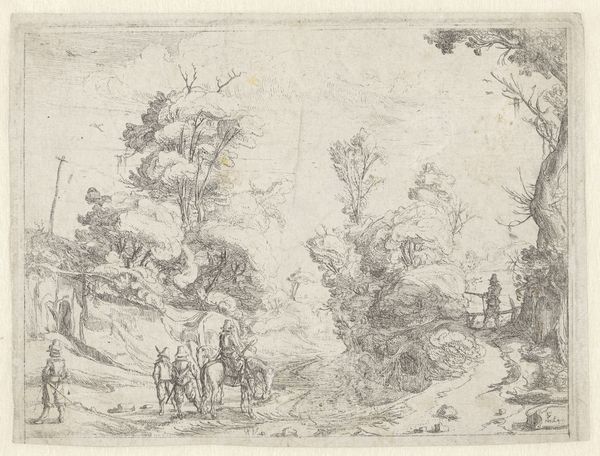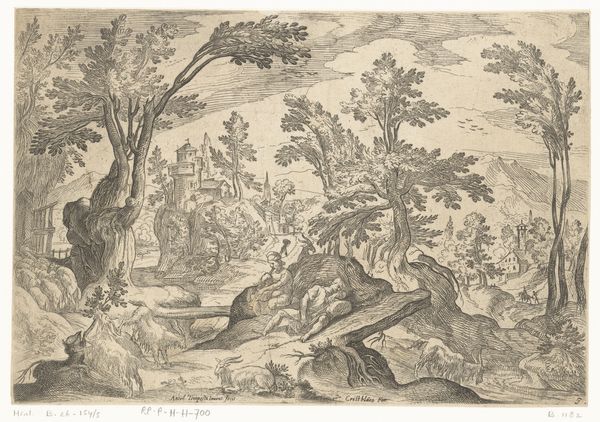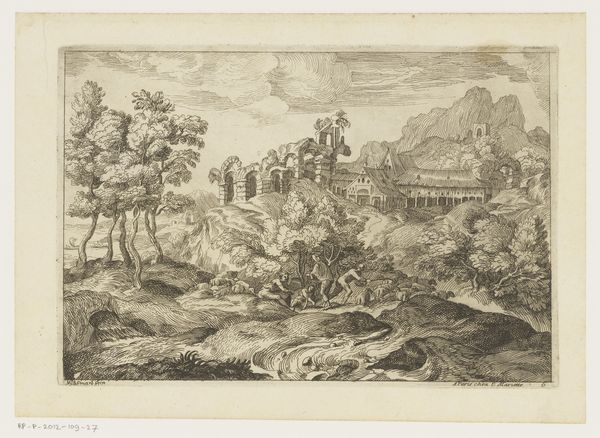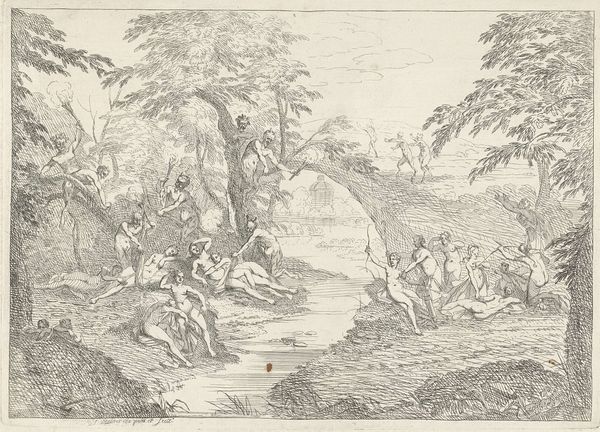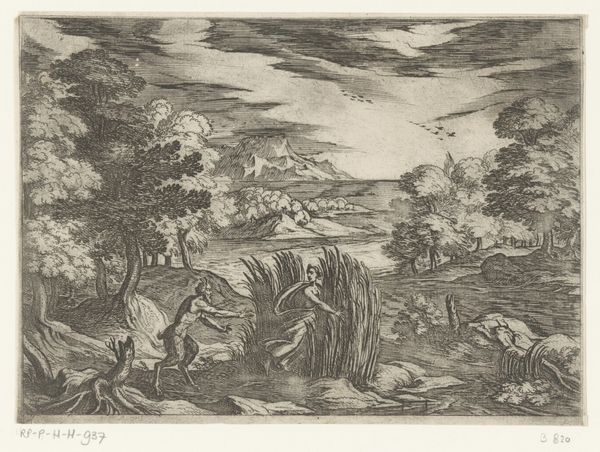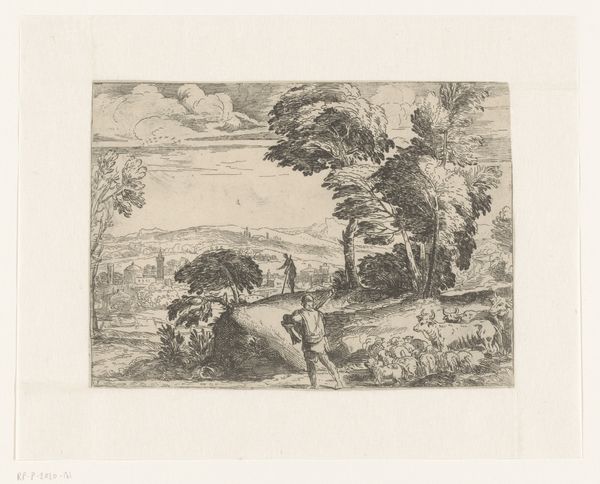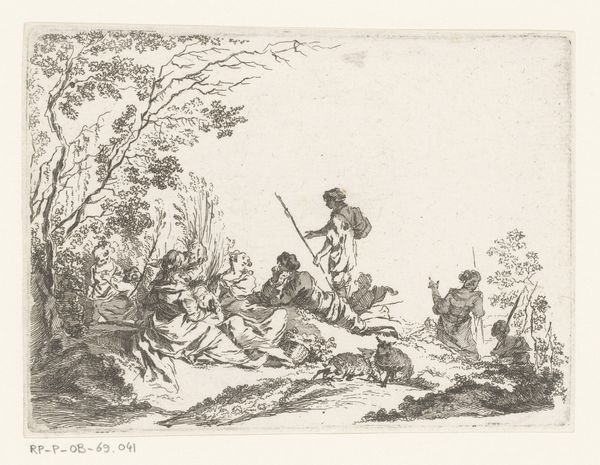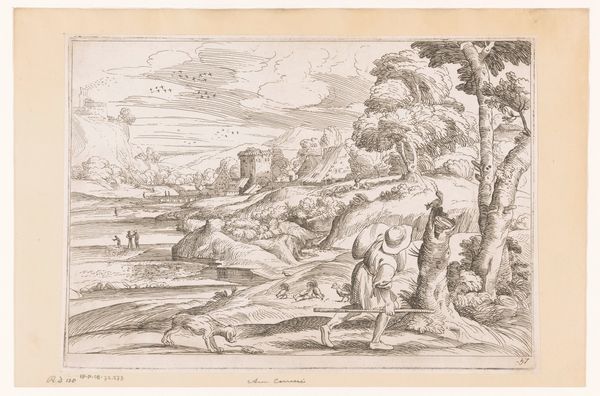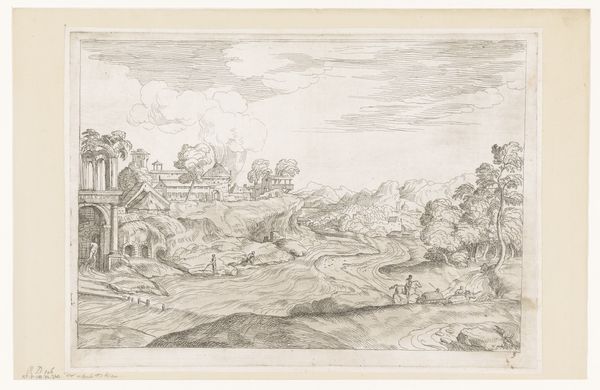
print, etching
#
ink drawing
#
baroque
#
pen drawing
# print
#
etching
#
etching
#
figuration
#
line
#
history-painting
Dimensions: height 285 mm, width 404 mm
Copyright: Rijks Museum: Open Domain
Curator: What a strikingly spare image. Jean Pesne rendered this piece, "Christus in Getsemane," between 1666 and 1695 using etching and pen and ink on laid paper. Editor: It is stark. The lines feel incredibly fragile, yet the scene evokes a powerful sense of desolation. Curator: Desolation absolutely hits on one aspect of this. Here, we see Christ kneeling on a rocky outcrop, arms outstretched towards an angel appearing in the upper right, presenting him with a chalice. Below him, his disciples slumber, unaware of his anguish, or, arguably, uncaring about it, given they abandoned him later in the narrative. In the left distance, we glimpse the approaching figures, potentially soldiers come to arrest him. It all underscores the loneliness and abandonment that characterize this pivotal moment in Christian theology. Editor: The composition cleverly emphasizes Christ's isolation. The rocky crag acts as a physical barrier, distancing him from his followers, both the sleeping disciples and the approaching crowd. Even the swirling clouds above him seem to isolate him rather than offering solace. Curator: Precisely. Pesne uses line to establish not only form but mood; its relative fineness suggests that precarious moment before dawn when so much remains unresolved, uncertain. It is interesting to see the intersection between art and faith intersect. Christ’s identity and what it represented to a marginalized group in early societies has always been a matter of interest. Even now it’s hard to overlook how it can empower an outcast. Editor: And yet, it's impossible to divorce the linear grace, the elegant figures, the swirling energy of the angel from Baroque aesthetics. It's a beautifully realized composition. Curator: It certainly asks questions of power structures inherent within faith as well as faith itself and does so quite poignantly using art and thoughtful compositional design. Editor: Indeed. Looking at it again, that balance between technique and emotive subject is especially thought-provoking.
Comments
No comments
Be the first to comment and join the conversation on the ultimate creative platform.
